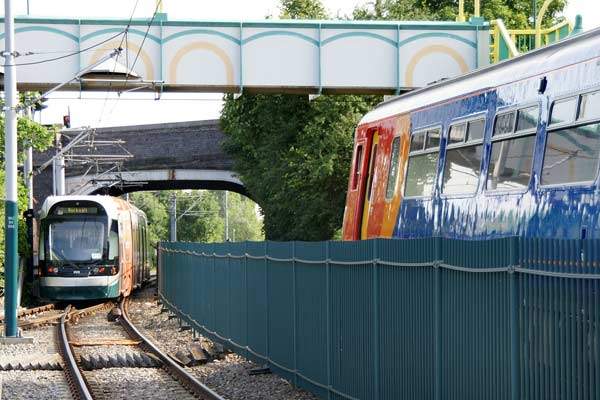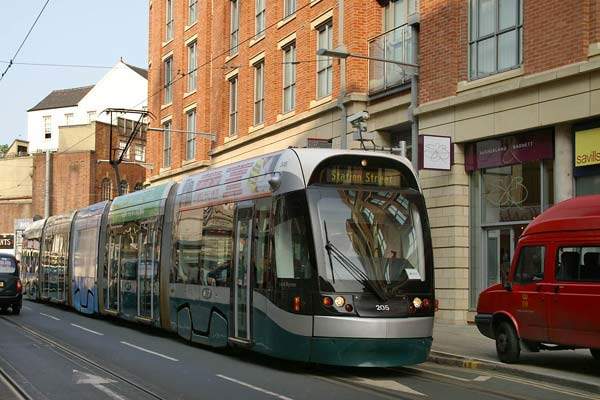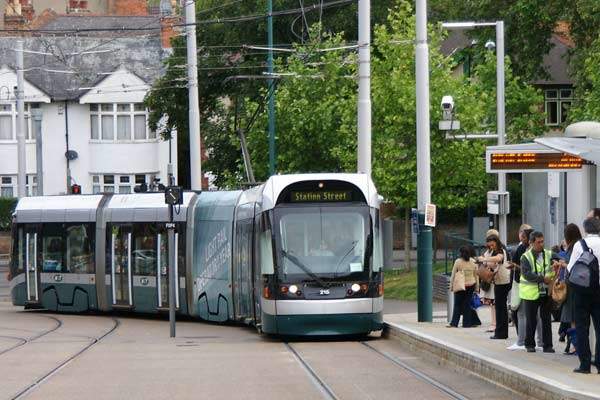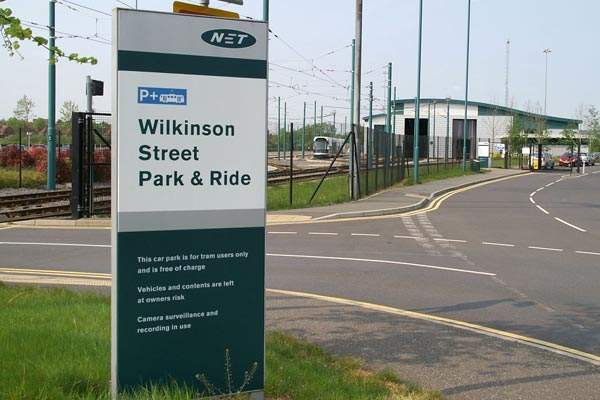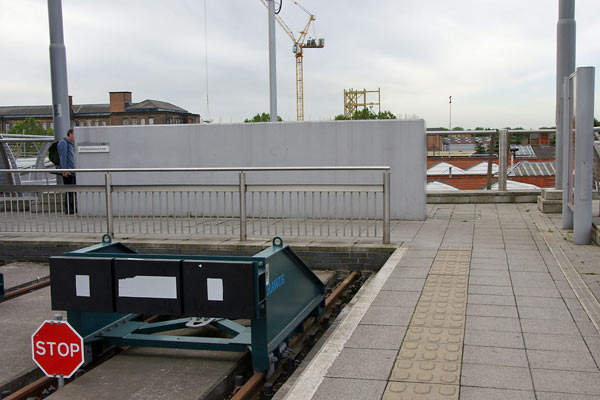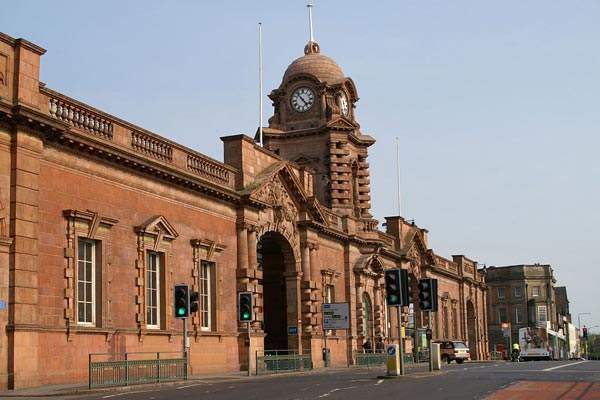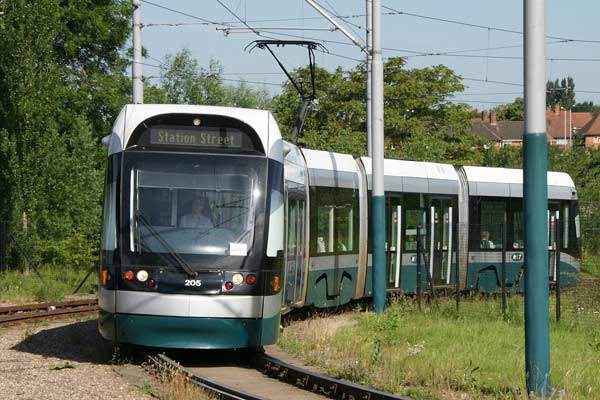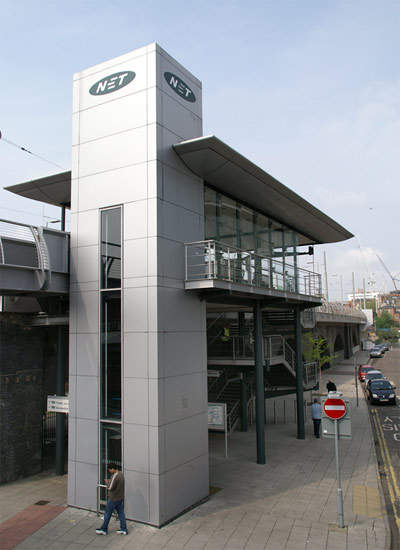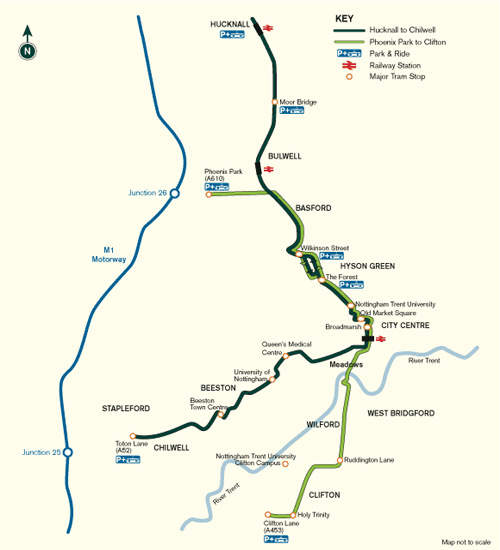Nottingham in England’s East Midlands forms the core of the UK’s seventh largest and third fastest-growing urban area. Influenced by high population density, a complex road pattern restricted by the Trent river crossings on the south side and with retail and entertainment outlets concentrated in the centre, Nottingham has the UK’s second-highest bus usage after London.
These are some of the factors that encouraged the creation of Nottingham Express Transit (NET), a light rail system that began revenue services in March 2004.
Although Nottingham had long enjoyed a diverse and resilient economy, the area was affected by the decline in mining and manufacturing. In the late 1980s Nottingham City Council, Nottinghamshire County Council and the local enterprise body identified a modern tramway as a means of stimulating urban renewal, as well as tackling the congestion that had become an unwelcome feature of the area’s roads.
The project
Remaining the most recently opened UK light rail system, NET is regarded as successful in delivering upon the intentions that underpinned its creation, achieving high levels of user satisfaction and with a high standing within the transport sector.
For the urban area in the five years to 2008, Nottingham increased public transport use by 8% and recorded a sub-1% increase in traffic growth, contrasting with the national average of around 4%.
Contracted to operate for 30.5 years, Arrow Light Rail Ltd was the special purpose company consortium created to design, build, fund, operate and maintain NET Line 1. Operation is contracted to Nottingham Tram Consortium (NTC), an equal partnership between Transdev and Nottingham City Transport.
Involvement of the city bus operator led to service restructuring to feed NET, with subsequent additions like those to the main hospitals. Private bus operators have also opted to add services with connections at NET stops.
The £220m project funding was met from bank loans, sponsor equity and grants. Repayment is from performance-related payments from promoters Nottingham City Council and Nottinghamshire County Council and the fares revenue.
However successful Line 1 proved to be, benefits of a single line were finite. The councils have consequently promoted Phase 2 to serve the conurbation’s south and west as part of Greater Nottingham transport strategy.
Phase 2 is for two new lines to diverge just south of the mainline station. The westerly 9.8km (6.1 mile), 15-stop arm will serve the regional hospital, the University of Nottingham, business parks and Beeston town centre, with the Chilwell/Toton Lane terminus close to the M1 motorway and A52 trunk road.
In contrast, the southerly 7.6km (4.75 mile) 13-stop arm will run primarily through residential areas, some targets for social regeneration. It will use a reworked existing bridge over the Trent before joining another section of former Great Central alignment to serve the communities of Wilford and Clifton, terminating by the A453, Nottingham’s southern M1 connection.
The park-and-ride policy (five Line 1 sites with 3,000 free places) continues with Phase 2. Intended to attract drivers off feeder roads and onto trams, around 2,500 new places are to be divided between the Chilwell and Clifton termini.
Infrastructure
In common with other modern UK systems, NET is 1,435mm gauge and electrified with 750V DC overhead supply. Line 1 is 14.4km (9 miles) long with 23 stops between Nottingham railway station and Hucknall, with a short westward branch to the Phoenix Park park-and-ride site. The northern section largely uses heavy rail alignments, most of which retains a parallel heavy rail passenger service.
Contributing to 99% service punctuality, the system is mainly on reserved track, including tram-only sections in the city centre and through residential streets. At the southern end, Line 1 follows the alignment of the abandoned Great Central main line, a new viaduct maintaining a level to the present tram terminus.
This allows for Phase 2 to bridge the mainline station prior to a new interchange that forms part of ‘The Hub’, a separate but complementary project to redevelop Nottingham station into a new rail/bus/parking interchange.
With 60% traffic segregation, Phase 2 lines feature a higher proportion of street running than Line 1, with three years required from the start of construction to service operation. Projected journey times from Nottingham station are 21 minutes to Toton Lane and 28 minutes to Clifton.
Rolling stock
In response to safety access regulations, consortium member ADtranz (later Bombardier) changed from the envisaged Eurotram to its Incentro design. Assembled 16 miles (26km) away from Nottingham at Derby, the 15 five-unit 100% low-floor Incentros provide air-conditioned accommodation for 191 passengers, 62 seated.
The demands of Phase 2 will mean that the fleet will need to double in size, although the high availability required to run current Line 1 services and growing demand (passengers carried in first three years: 8.4 million–9.7 million–10.6 million) indicates that additions may be needed earlier. Built on reclaimed industrial land, Wilkinson Street depot has the space for the extensions required to accommodate and maintain the extra vehicles.
Signalling and communications
Contrary to UK light rail practice at the time, NET opted for on-board ticket sales rather than on-board or stop-located machines. Staff rotate driving and conductor roles, with two for fare collection per vehicle at peak times. They are also deployed for ticket sales at busy stops. The ticket range includes some for combined bus and NET use.
Although with CCTV route and tram coverage, passenger feedback indicates appreciation of the high-profile staff presence. Stops are equipped with real-time displays and trams have visual and audio information. Tram crews have direct contact with the Wilkinson Street control centre which also has shared access to other CCTV systems covering the route.
The future
To avoid the problems of an expanded NET with through running between the phases potentially having two operators, the contract with Arrow Light Rail will be ended 27 years in advance of its planned expiry. The compensation payable is likely to be covered by the incoming organisation – which could be Arrow – that will take up Line 1 operation as well as building and operating Phase 2.
In 2007 the councils applied for a Transport and Works Order to gain the powers needed to create and operate Phase 2. Subject to government decisions expected in 2009, the designated developer could begin construction in 2010 for a projected 2013 start of services.

